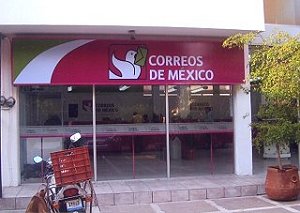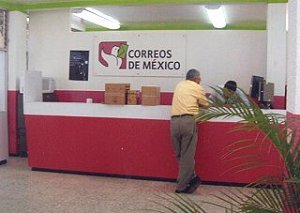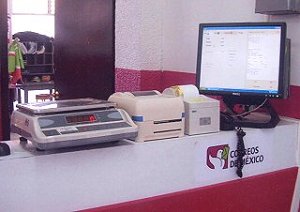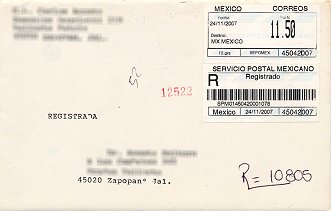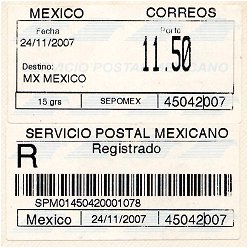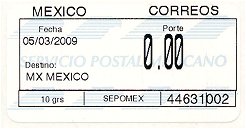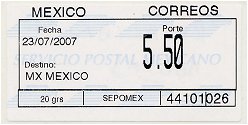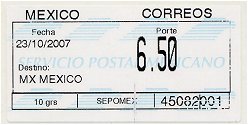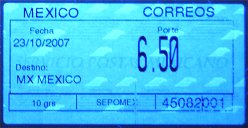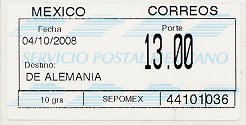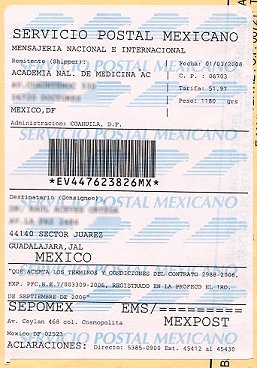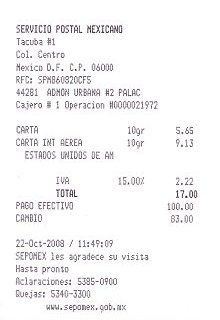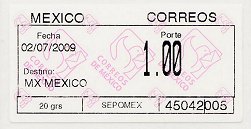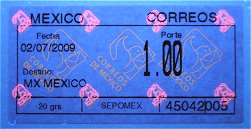In recent years, Correos de Mexico (formerly Servicio Postal Mexicano - SEPOMEX) has undergone a major process of restructuring and renewal that has modernized and improved the service offered to users. One of the main innovations is the implementation of the so-called Sistema Integral de Operación (SIO) - Integral Operation System, a computer solution (software + hardware) that aims to automate and modernize post offices across the country. SIO was introduced in October 2006, with the system starting operations from February 28th 2007. The implementation of the Sistema Integral de Operación is being developed in phases. It is expected that the system will be installed at 500 counter positions in 157 post offices spread over many large cities throughout the Mexican states.
The self-adhesive label size is 60 x 30 mm., on a white waxed paper, and has a space of 3 mm. between the labels. The grey-blue pre-printed security background includes a double row (top and bottom) with the former continuing SEPOMEX postal emblem (the eagle's head), and the text SERVICIO POSTAL MEXICANO in the centre. These labels have been reprinted on different occasions from 2007, using different paper types and additional security imprints. For example, the designs of the security background of the earliest labels were printed in a grey-blue colour, and the central text has a height of about 20 mm. (next picture).
New reprints were made shortly after, and included an important new feature - the inclusion of an additional security impression using invisible ink, with the eagle head postal emblem in single and double rows. This imprint is only visible under ultraviolet light (right picture). The pre-printed security background has become bluer, and the central text is larger, about 25 mm. high. With such characteristics, there are different paper types, with different reactions under UV light.
In short, an interesting project for the modernization of a postal administration that has a somewhat negative image and efficiency. We will closely follow developments and will update events in future articles.
New thermal self-adhesive labels, with a change of background design, came into use from June 2009. Following the changes introduced in September 2008, the labels show the new logo of Correos de Mexico, in pink-magenta. As a security measure, the labels include the overprinting of the 2 rows of 4 small logos with invisible ink, which reacts pink under ultraviolet light (right picture).
The changeover was gradual at the different post offices fitted with the SIO application, bringing in the new labels as they ran out of rolls of the previous design. There are no changes in the printing done by the built in software. Article written with Dr. Alberto Acosta Soltero, Mexico. With the collaboration of Alicia Macías and Oralia Peña.
© J. Jove - M. Sans. ATEEME. Variable value stamps study group. All rights reserved This page was created in February 2009 and last updated: 22.07.09 . English edition rewritten by S. Goodman (21.7.2009) |
||||||||||||||||||||||||||||||||||||||||||||




